Rantepao, on the Indonesian island of Sulawesi, is the capital of Northern Toraja. Tana Toraja, the land of the Toraja, is famous for its incredible funeral rites and the Aluk To Dolo, the animist religious custom transmitted orally.
When you visit Rantepao and the Toraja Country, you quickly realize that the whole life of the islanders is organized around death and funerals.
Today, I am going to describe some of the most interesting and easy sites to visit from Rantepao, as there are many of them.
In this article, you will find:
- All the practical information you need to prepare your trip.
- Which sites to visit easily.
- How to get there.
If you visit Tana Toraja or Sulawesi, a map can be extremely useful. The island is still away from mass tourism and local maps are more than approximate!
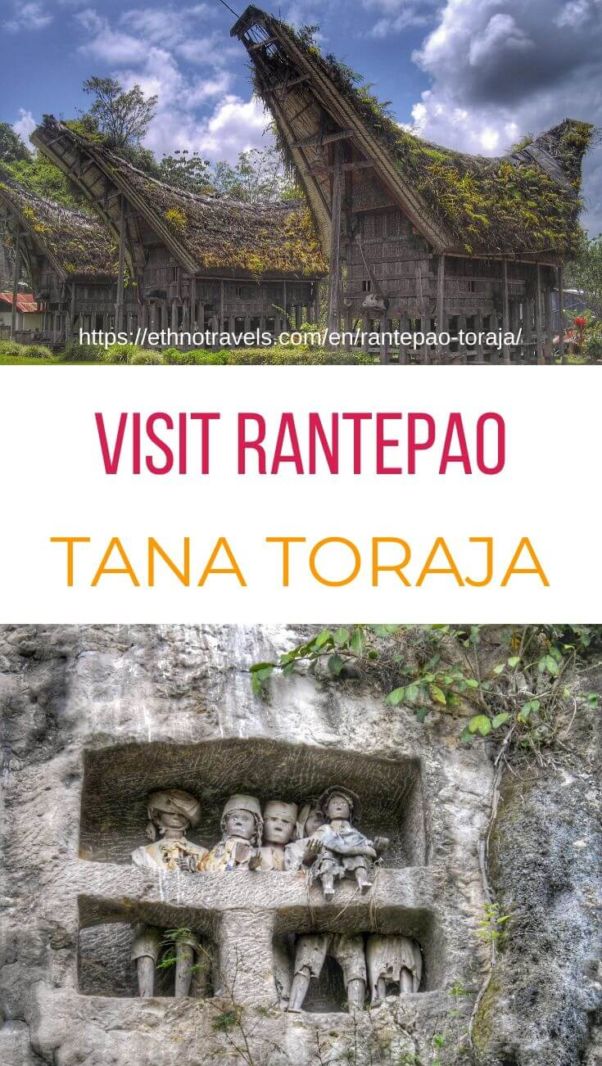
Faq on Rantepao Toraja.
Contact me if you don’t want to organize your trip alone, want to be accompanied by a French speaking guide and want to travel as close as possible to the people. Thanks to my experience, you will discover the Toraja culture as closely as possible and will even be able to save on the price of your plane tickets.
Rantepao is located in the Toraja Country or Tana Toraja, in the centre and south of the Indonesian island of Sulawesi.
There is no airport in Toraja Country, but the closest one is Makassar.
It takes 8-9 hours by bus from Makassar to Rantepao, or 5 hours by taxi through beautiful scenery.
The funeral season is in August, but I was there in September and there were still lots of funerals.
It all depends on your desires and tastes. If like me you are passionate about cultural discoveries, hiking and beautiful human encounters, you can easily spend 3 weeks there without getting bored, also exploring the Mamasa valley.
How to get to Rantepao from Europe at the best price?
- Book a return flight to Kuala Lumpur with Qatar Airways. I advise you to cut the trip short by spending one or two nights in Malaysia and why not more by visiting Singapore. You will be able to take the opportunity to get a wifi access box ordered beforehand on Klook (see information below).
- Book a low-cost flight from Kuala Lumpur to Makassar Ujung Padang.
- Take a bus Makassar Rantepao.
Click here to book your Qatar Airways flight
Find the best low cost price from Kuala Lumpur to Makassar with the Skyscanner widget below.
I have not yet found an online booking solution for the bus Makassar-Rantepao. During my trip, I booked the bus on my arrival for a departure the next morning at 8am.
How to get unlimited wifi 3G/4G throughout Indonesia?
Order before your departure your unlimited 3G wifi box on the Klook website. Pick up is at Kuala Lumpur airport.
Do I need a visa?
Check below. It’s free, fast and easy.
Hotel Rantepao?
I recommend the beautiful Luta Resort Toraja. Ideally located in the centre of Rantepao but very quiet, it has a beautiful courtyard giving access to very comfortable, pleasant and clean rooms and suites. Its restaurant, by the river, is very intimate and offers local food at a very good price.
With a French photographer I met in Rantepao, we went to see the prices “for fun”, thinking it was out of our budgets. When we found that this was not the case, we made it our “base”. Don’t rely on Agoda’s photos, which don’t really do justice to the beauty of the place.
Don’t trust Agoda’s photos, which don’t really do justice to the beauty of the place.
Click on the photo or here to check the prices and availabilities (Agoda)

Or check the price with Booking here
How to visit Pasar Bolu market?
Located 2kms northeast of the city, the market of Pasar Bolu is easily accessible by bemo.
It takes place every 6 days and you should pay an entry fee of 10,000RP.
Once the admission fee is paid, you’ll find yourself in the middle of a vast pool of dung.
All around, you’ll see men proudly displaying their buffalo. It must be said that selling it means pocketing a real fortune and nothing is left to chance to seduce the client. The animal has been carefully washed, its coat brushed and watered regularly. A ring has been inserted in its nostrils and its happy owner regularly raises his head: it is necessary to be noticed, admired, desired. The buyer has to get his money’s worth, well “his”… often the one by which he will get into debt. Families often go into debt to buy these buffaloes and the whole life of the Toraja is organized around the preparation of their funeral.
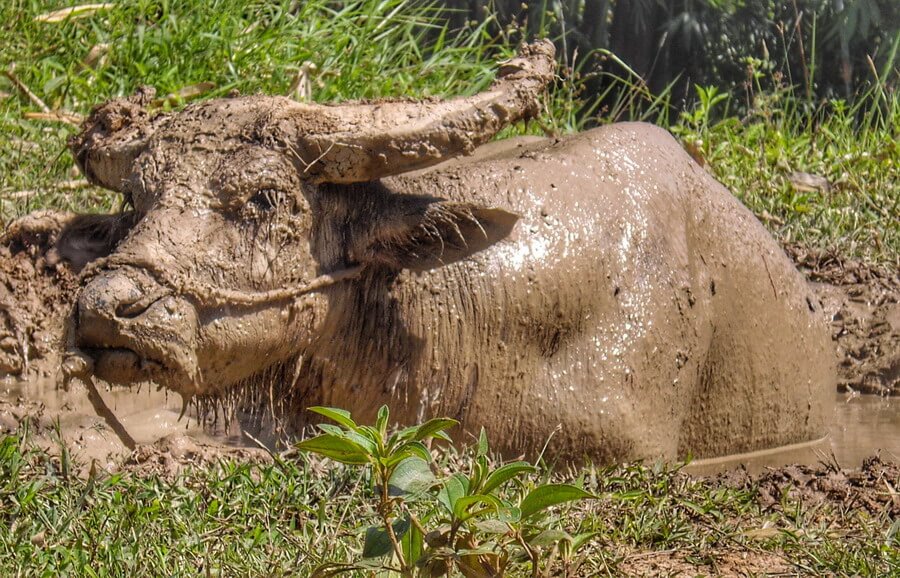
Owning a buffalo is the greatest pride of the Toraja people. It is the main domestic animal, and the one that will follow its master to death. The Toraja believe that their possessions follow them into the next life to serve them and serve as a vehicle to the other world. Therefore, what could be more natural than sacrificing the house buffalo at the funeral?
It is also a way to show respect for the deceased and to show the wealth of the family. In the richest families, several dozen buffaloes can be killed on this occasion. Their horns will decorate the family home and show everyone the wealth of its occupants. The white or pink buffalo is the cheapest, the black is of an intermediate price, the most expensive and most sought-after being the spotted one, usually with blue eyes.
A little further on, you will see the corner of the pigs, usually solidly tied on trestles made of bamboo. To prevent them from getting heatstroke in this blazing sun, their owner waters them regularly. The animals, placid, are waiting for a liberation that may be painful: the fatter they are, the more likely they are to end up hanging from bamboo bars and carried triumphantly to the funeral of their future owner…
Admire the dexterity of the men who string up the pigs… on the scooters. As is often the case in Asia, two-wheelers have unusual passengers!
Linger in the traditional market. In a maze of alleyways, everything is sold, hair are cut, combed, people are cured, some drink palm wine in bamboo tubes, chat, meet, greet “hello mister”, call out, laugh, smile, sing, dance… In short, they take the time to live before the ultimate moment of what is only a stage: death in this temporary life and the next life, the one that will be permanent, the one for which they are here and for which they don’t stop preparing, right up to their funeral…
People buy the buffaloes and pigs that will be sacrificed during the funeral at the interesting market in Pasar Bolu.
The average price for a buffalo is 20 million Indonesian rupees (about €1,300). Large funerals for the wealthiest families can cost 375 000€/400 000€ only for buffaloes.
The buffaloes live with the families and are taken care of, almost like a family member. Frederik, who comes from the most important family in Rantepao, will proudly show me the pictures of his beloved blue-eyed spotted buffalo…
Visit Kete Kesu.
Kete Kesu, considering the interest of the site, will be the subject of another article which I will indicate you the link here.
Is Lemo interesting?
Lemo is a village 10kms south of Rantepao, on the road to Makale. So you can take one of the many bemos on the way to Makale and stop at the junction to the site. On the way back, you will be able to spot the places where you want to linger on the way back.
I recommend Lemo rather than Londa, on the one hand because Londa seems much more touristic to me, on the other hand because you will see in Tampangallo the same type of tomb in a cave.
The first thing you will see are the traditional Toraja houses, the Tongkonans.

The funerary site of Lemo is very well known and often confused with that of Londa.
It consists of what is called Liang lokko, tombs dug into a cliff or hill, in which the coffin or body is placed directly.
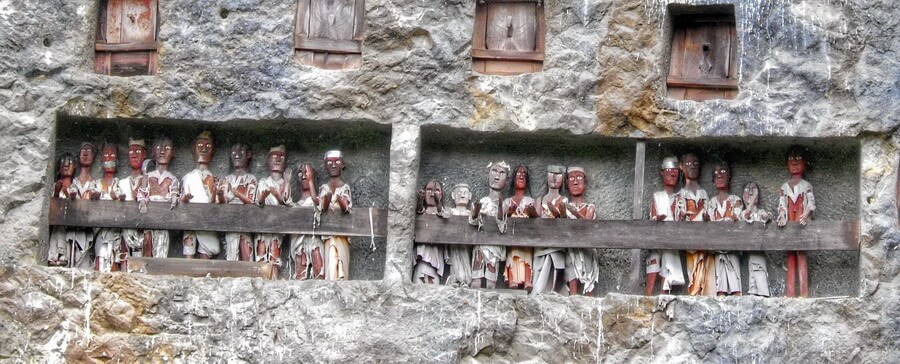
In addition to the Liang Lokko, there are several tau tau balconies. The tau tau is a life-size representation of the deceased, or more precisely of his spirit, made of wood or bamboo. It should be as similar as possible. So some of the deceased’s clothes, glasses, jewellery, etc. are put on it.
In the Toraja language, “tau” means “man”. The repetition of the word means “resembling”, as in Bahasa Indonesia (jalan = street. Jalan jalan = I’m walking. Tau = man. Tau Tau = almost a man).
Only the richest and the aristocrats used to be able to afford a tau tau.
They can be found on cliff balconies or in burial caves near the body. They thus serve as guardians of the grave and protectors of life, preventing the soul of the deceased from being tempted to go and haunt the living.
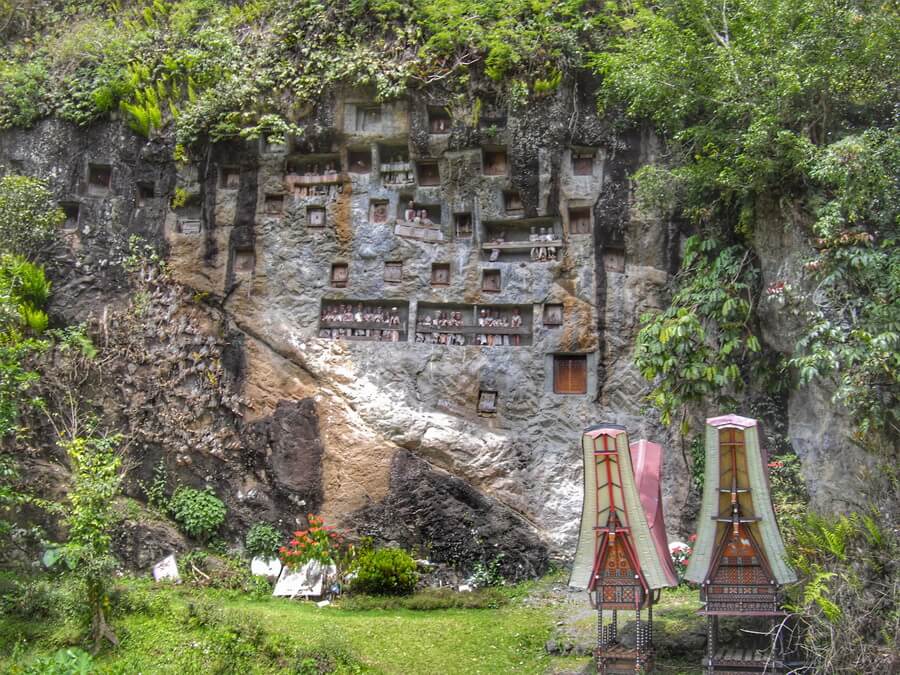
On the right, you can see Liang batutu. In traditional style, this tomb looks like a tongkonan and faces west. It has rooms with secret doors that only a few people know how to open. The front and interior walls are decorated with statues symbolizing nobility and indicating the number of buffaloes sacrificed during the funeral.
Don’t hesitate to take the hiking trails in the surrounding area, between rice terraces and grandiose mountains. You will most certainly be greeted by the Torajas working in the rice fields to drink the famous and delicious “Torajan kopi“, the Toraja coffee. A blend of Arabica and Robusta, it is for me the best coffee in the world!

Hike east of Makale.
Arm yourself with your compass and head east from Makale on this beautiful trek to discover the burial sites of Suaya, Tampangallo and Kambira. Don’t be afraid to get lost: you’ll always find someone to get you back on the right path or drive you back!

Suaya.
Suaya is a burial site 6.7kms from Makale.
Like in Lemo, the tau tau are put in balconies in the cliff. You will see in particular a family with a child (picture illustrating the article), which is rather rare in Toraja Country. In Kambira, you will discover the children’s graves.
The outfits and the finesse of the features of some taus-taus show that they occupied a very high rank. For the “lower classes”, taus taus are made of bamboo. For the middle classes, sandalwood or ranbu wood is used. For the upper classes, jackfruit wood is used. The difference in species and woodworking is clearly visible here.
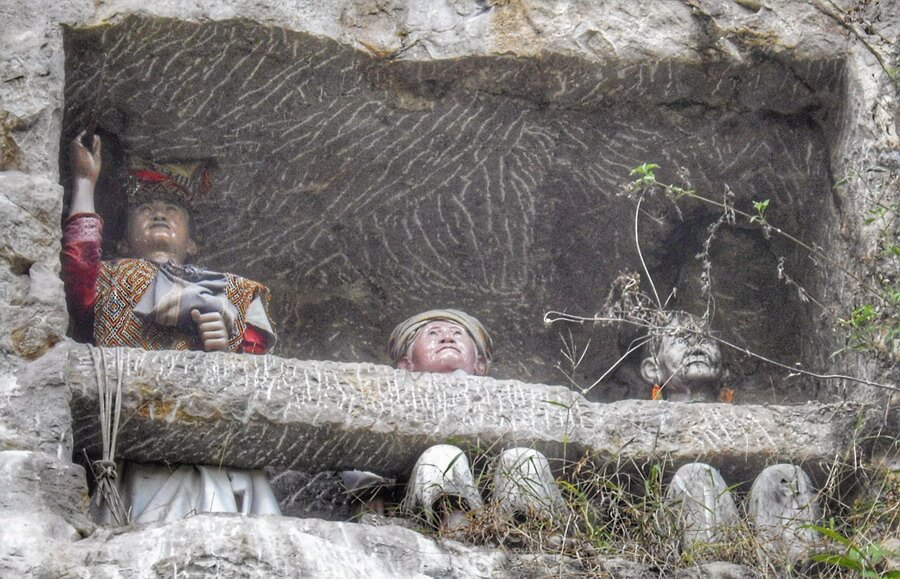
Tampangallo.
Here the tau tau and Liang tedong-tedong are deposited in a cave.
To make Liang tedong-tedong, a large tree in the shape of a buffalo or boat is cut down and the body is placed inside. The Torajas have an ancestor who comes from the land of the Toraja country (hence the buffalo), and another from the sea.
The tombs belong to chiefs of Sangalla, a nearby village, who are said to be descendants of the deity Tamborolangiq. This god is said to have introduced the caste system, funeral rituals and agricultural techniques into Toraja Land.
Kambira.
In Kambira, we find the most moving burial site: the burials of babies and young children who died in infancy.
A hole is made in a large banyan tree and the child is placed inside the tree. In the Toraja belief, it is believed that the child will continue to grow with the tree.
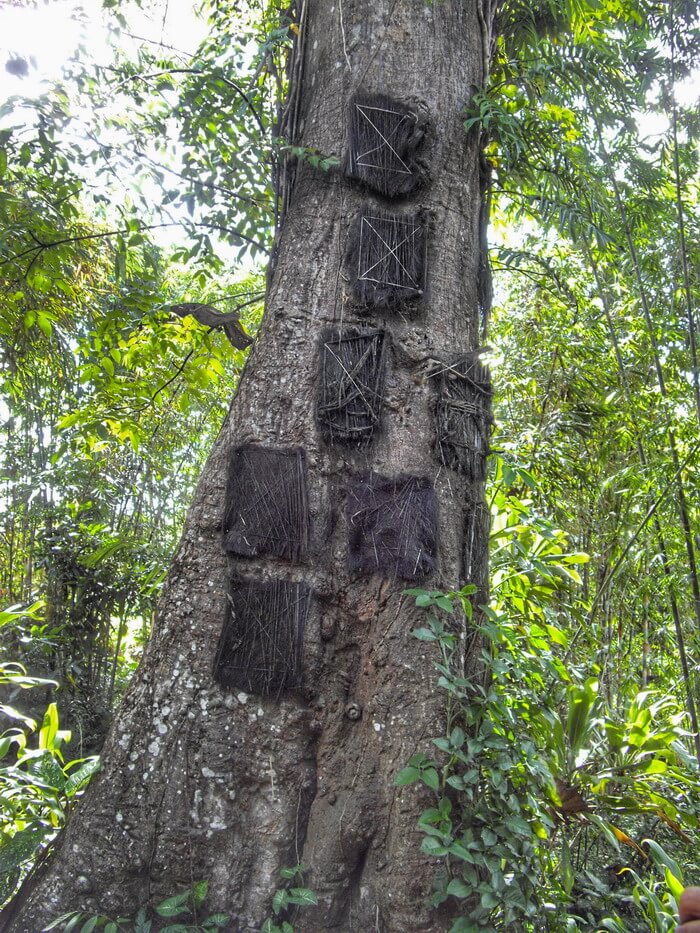
There are other tombs for children: the Liang tomelolo / ma’tarrusan. The child is buried in the ground under the house or the rice granary, with eggs symbolizing what the baby is: a sinless egg.
Bori site.
This is the last site I recommend near Rantepao.
From Rantepao, you can walk to Bori, a few kilometres to the north.
You’ll find a rante, ceremonial ground, with megaliths.

Feel free to linger around. We thus discovered a site à la pirate des Caraïbes: tombs, bones and skulls in the jungle, in the middle of tangled lianas.
Contrary to what we sometimes read, if the bodies are never deposited directly in the ground, it is not because it is sacred, but to prevent them from being dug up and eaten by animals. But you will often see disembowelled coffins with skulls and bones on the ground.
You are a travel agency or a tour operator looking for a bilingual French-English guide for your next tour in Sulawesi?
Please, contact me! In addition to being a seasoned traveler, I have worked for 19 years in the field of traveler customer relations, conflict management and connection breakdowns in international stations. You can learn more and take a direct phone appointment with me by clicking here, contact me via LinkedIn (link in the sidebar) or via the contact form (link in the bottom menu).
Conclusion – Rantepao Sulawesi.
The surroundings of Rantepao have a lot to offer, whether it’s discovering funeral sites, attending funerals, or simply hiking through beautiful scenery.
The Toraja Country, still away from mass tourism, has a lot to offer to curious travellers.
Have you ever visited Rantepao and Tana Toraja? What was the purpose of your visit?
Had you ever heard of the Toraja funeral rites and their special animist culture? Would you like to visit Toraja Land?
For more articles on Indonesia, check this page
Share this article with your family or friends who are planning a trip to Sulawesi or are interested in ethnology.
This article may contain compensated links. Disclaimer: As an Amazon Associate I earn from qualifying purchases. Read our disclosure policy to know more.


